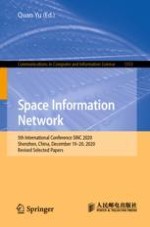2021 | Book
Space Information Network
5th International Conference SINC 2020, Shenzhen, China, December 19–20, 2020, Revised Selected Papers
Editor: Quan Yu
Publisher: Springer Singapore
Book Series : Communications in Computer and Information Science
